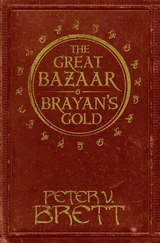At Viaweb, software included fairly big applications that users talked to directly, programs those programs used, programs that ran constantly in the background looking for problems, programs that tried to restart things if they broke, programs that ran occasionally to compile statistics or build indexes for searches, programs we ran explicitly to garbage-collect resources or to move or restore data, programs that pretended to be users (to measure performance or expose bugs), programs for diagnosing network troubles, programs for doing backups, interfaces to outside services, software that drove an impressive collection of dials displaying real-time server statistics (a hit with visitors, but indispensable for us too), modifications (including bug fixes) to open source software, and a great many configuration files and settings. Trevor Blackwell wrote a spectacular program for moving stores to new servers across the country, without shutting them down, after we were bought by Yahoo. Programs paged us, sent faxes and email to users, conducted transactions with credit card processors, and talked to one another through sockets, pipes, HTTP requests, SSH, UDP packets, shared memory, and files. Some of Viaweb even consisted of the absence of programs, since one of the keys to Unix security is not to run unnecessary utilities that people might use to break into your servers.
It did not end with software. We spent a lot of time thinking about server configurations. We built the servers ourselves, from components—partly to save money, and partly to get exactly what we wanted. We had to think about whether our upstream ISP had fast enough connections to all the backbones. We serially dated RAID suppliers.
But hardware is not just something to worry about. When you control it you can do more for users. With a desktop application, you can specify certain minimum hardware, but you can't add more. If you administer the servers, you can in one step enable all your users to page people, or send faxes, or send commands by phone, or process credit cards, etc, just by installing the relevant hardware. We always looked for new ways to add features with hardware, not just because it pleased users, but also as a way to distinguish ourselves from competitors who (either because they sold desktop software, or resold webbased applications through ISPs) didn't have direct control over the hardware.
Because the software in a web-based application will be a collection of programs rather than a single binary, it can be written in any number of different languages. When you're writing desktop software, you're practically forced to write the application in the same language as the underlying operating system—meaning C and C++. And so these languages (especially among non technical people like managers and VCs) got to be considered as the languages for "serious" software development. But that was just an artifact of the way desktop software had to be delivered. For server-based software you can use any language you want. Today a lot of the top hackers are using languages far removed from C and C++: Perl, Python, and even Lisp.
With server-based software, no one can tell you what language to use, because you control the whole system, right down to the hardware. Different languages are good for different tasks. You can use whichever is best for each. And when you have competitors, "you can" means "you must" (we'll return to this later), because if you don't take advantage of this possibility, your competitors will.
Most of our competitors used C and C++, and this made their software visibly inferior because (among other things), they had no way around the statelessness of CGI scripts. If you were going to change something, all the changes had to happen on one page, with an Update button at the bottom. As I explain in Chapter 12, by using Lisp, which many people still consider a research language, we could make the Viaweb editor behave more like desktop software.
5.4. Releases
One of the most important changes in this new world is the way you do releases. In the desktop software business, doing a release is a huge trauma, in which the whole company sweats and strains to push out a single, giant piece of code. Obvious comparisons suggest themselves, both to the process and the resulting product.
With server-based software, you can make changes almost as you would in a program you were writing for yourself. You release software as a series of incremental changes instead of an occasional big explosion. A typical desktop software company might do one or two releases a year. At Viaweb we often did three to five releases a day.
When you switch to this new model, you realize how much software development is affected by the way it is released. Many of the nastiest problems you see in the desktop software business are due to the catastrophic nature of releases.
When you release only one new version a year, you tend to deal with bugs wholesale. Some time before the release date you assemble a new version in which half the code has been torn out and replaced, introducing countless bugs. Then a squad of QA people step in and start counting them, and the programmers work down the list, fixing them. They do not generally get to the end of the list, and indeed, no one is sure where the end is. It's like fishing rubble out of a pond. You never really know what's happening inside the software. At best you end up with a statistical sort of correctness.
With server-based software, most of the change is small and incremental. That in itself is less likely to introduce bugs. It also means you know what to test most carefully when you're about to release software: the last thing you changed. You end up with a much firmer grip on the code. As a general rule, you do know what's happening inside it. You don't have the source code memorized, of course, but when you read the source you do it like a pilot scanning the instrument panel, not like a detective trying to solve a mystery.
Desktop software breeds a certain fatalism about bugs. You Know you're shipping something loaded with bugs, and you've even set up mechanisms to compensate for it (e.g. patch releases). So why worry about a few more? Soon you're releasing whole features you know are broken. Apple did this a few years ago. They felt under pressure to release their new OS, whose release date had already slipped four times, but some of the software (support for CDs and DVDs) wasn't ready. The solution? They released the OS without the unfinished parts, and users had to install them later.
With web-based software, you never have to release software before it works, and you can release it as soon as it does work.
The industry veteran may be thinking: it's a fine-sounding idea to say that you never have to release software before it works, but what happens when you've promised to deliver a new version of your software by a certain date? With webbased software, you wouldn't make such a promise, because there are no versions. Your software changes gradually and continuously. Some changes might be bigger than others, but the idea of versions just doesn't naturally fit onto web-based software.
If anyone remembers Viaweb this might sound odd, because we were always announcing new versions. This was done entirely for PR purposes. The trade press, we learned, thinks in version numbers. They will give you major coverage for a major release, meaning a new first digit on the version number, and generally a paragraph at most for a point release, meaning a new digit after the decimal point.
Some of our competitors were offering desktop software and actually had version numbers. And for these releases, the mere fact of which seemed to us evidence of their backwardness, they would get all kinds of publicity. We didn't want to miss out, so we started giving version numbers to our software too. When we wanted some publicity, we'd make a list of all the features we'd added since the last "release," stick a new version number on the software, and issue a press release saying that the new version was available immediately. Amazingly, no one ever called us on it.
Читать дальше












